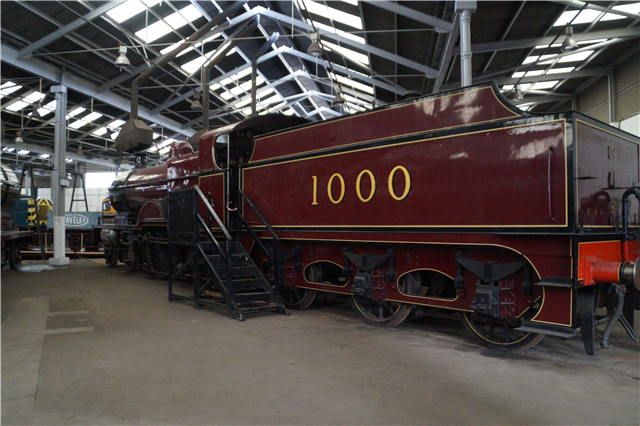Midland Railway 1000 Class is a class of 4-4-0 steam locomotive designed for passenger work. They were known to reach speeds of up to 85 mph. They were developed from a series of five locomotives (2631–2635) introduced in 1902 by Samuel Waite Johnson, which had a 3-cylinder compound arrangement on the Smith system, with one high-pressure cylinder inside the frames and two low-pressure cylinders outside and used Smith's starting arrangement. On the first two locomotives independent control of high-pressure and low-pressure valve gears was available.
From 1905 onwards, Johnson's successor Richard Deeley built an enlarged and simplified version, eliminating all the Smith refinements and fitting his own starting arrangement, making the engines simpler to drive. In the 1907 renumbering scheme the five Smith/Johnson locomotives became 1000–1004 and the Deeley compounds 1005–1034. Ten more of these were added in 1908–1909. The original Johnson locomotives were all subsequently renewed as Deeley compounds, including the now preserved 1000 which was rebuilt and outshopped with a superheater in 1914. Numbered 1000–1044 by both the Midland and LMS companies, British Railways renumbered the Midland series of compounds 41000–41044 after nationalisation in 1948.
After the grouping, the LMS continued to build slightly modified MR Compounds as the LMS Compound 4-4-0 - none of these survived. However, No. 1000 was set aside for preservation after withdrawal in 1951 and restored in 1959 close to its 1914 condition and is a part of the National Collection.
